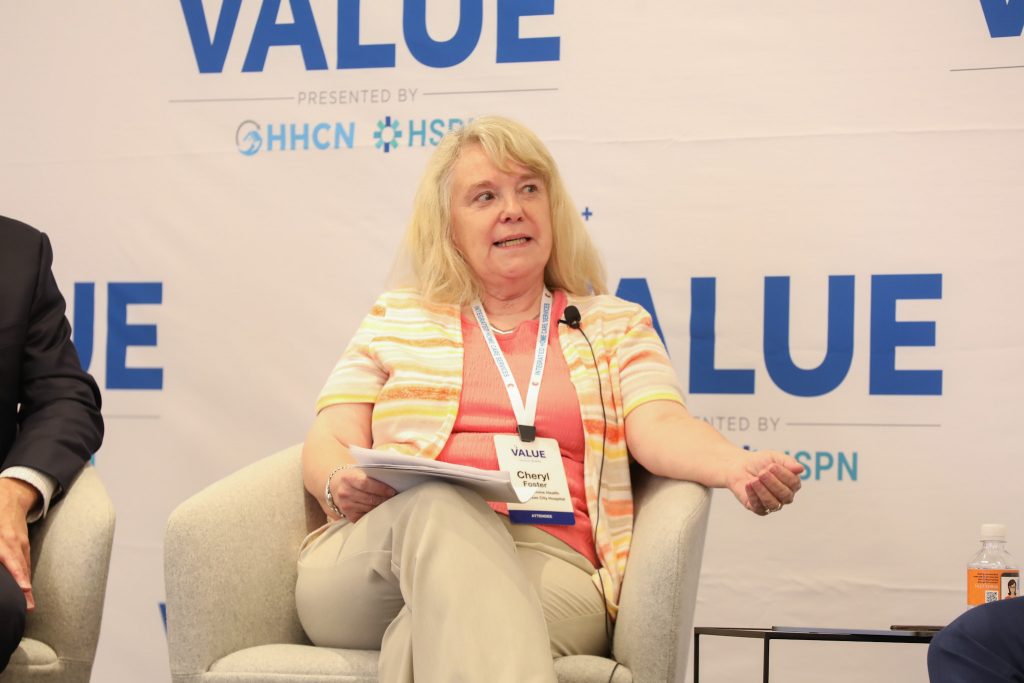
How Home Health Providers Are Training Staff to Improve Patient Survey Scores – Home Health Care News
With a number of home health regulatory changes coming once the calendar flips to 2023, agencies are focusing on getting a head start adjusting their staff to changes.
Many leaders consider major regulatory shifts as an issue that needs to be dealt with from the top, down. But that’s not necessarily the case.
The Home Health Value-Based Purchasing (HHVBP) Model, for example, will be implemented on Jan. 1 of 2023.
That happens to be the same date when OASIS-E will finally be implemented as well.
Arming staff with the ability to deal with these changes is as important – if not more – than leaders’ ability to adapt themselves.
“Our staff has really emphasized that our ultimate goal with value-based purchasing is to continue to keep providing the best possible care for our patients,” Cheryl Foster, director of home health at North Kansas City Hospital, told Home Health Care News. “The biggest challenge, I think for a lot of people, is the cost of getting the staff and educating the staff on these changes.”
Foster has been in the home health industry for about 30 years and management for a majority of that time. North Kansas City Hospital’s home health arm has a patient census of about 350 and up to 85 full- and part-time employees.
The ultimate goal, of course, is for the home health division to continue to provide the best possible care for its patients under HHVBP.
“That needs to really be our focus,” she said. ”We’re going to look at the different things that roll into value-based purchasing, but the reason we’re looking at them is because we want to provide better care for our patients and better outcomes.”
However, reaching that goal will prove difficult for several reasons.
One of the ways Foster is approaching training is by having her staff take the time to participate in the education in a way where they feel like they are getting value out of it as well.
“One thing that they hate most is wasted time, or when they feel like they’re not being productive and not providing care for their patients,” Foster said. “It’s very difficult to get them out of the field and away from patient care. Presenting the education in a manner that they really buy into – and getting some of them to be champions for it – is very important.”
There is an obvious incentive for employees when it comes to HHVBP, however.
“I think in the long run, it will be rewarding to our staff because they will be able to see on a scorecard very easily where they rank,” Foster said. “It really will [feel like] a reward for what they’ve achieved.”
While some are less bullish about value-based purchasing, Foster believes it will benefit those agencies that have been prioritizing value all along.
“[HHVBP] really is looking at the outcomes, our rehospitalization rates and patient satisfaction,” Foster said. “Which are all factors that almost every agency has been benchmarking for years, and has been trying to improve. The value-based purchasing just gives them more motivation for that.”
Foster and her team try think survey scores will improve if they show employees the survey patients will take. Then, staff can get familiar and comfortable using terminology that shows up on the survey.
For instance, one question on the survey asks patients if someone had taught them about the side effects of their medications. Foster said her staff would try to educate their patients about that but weren’t using the term “side effects.”
“Picking up some of those terms that are actually in the survey helps patients think later, ‘Oh yeah, I remember they mentioned that word side effects,’” Foster said at VALUE earlier this month.
Her staff also has started to use the word “definitely,” more regularly in home visits, a tactic Foster said should remind patients when they are answering whether or not they would “definitely recommend” the home health agency.